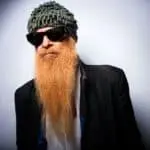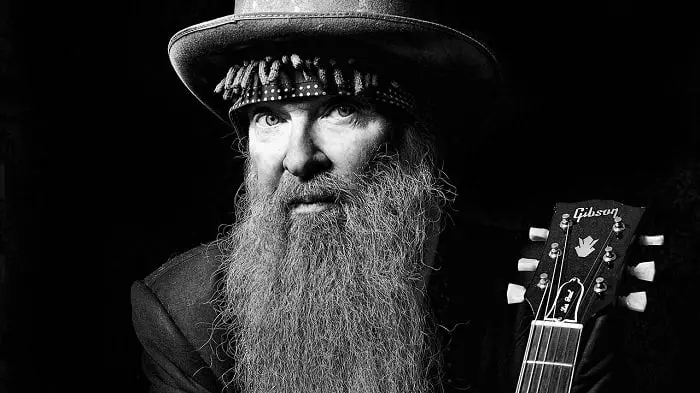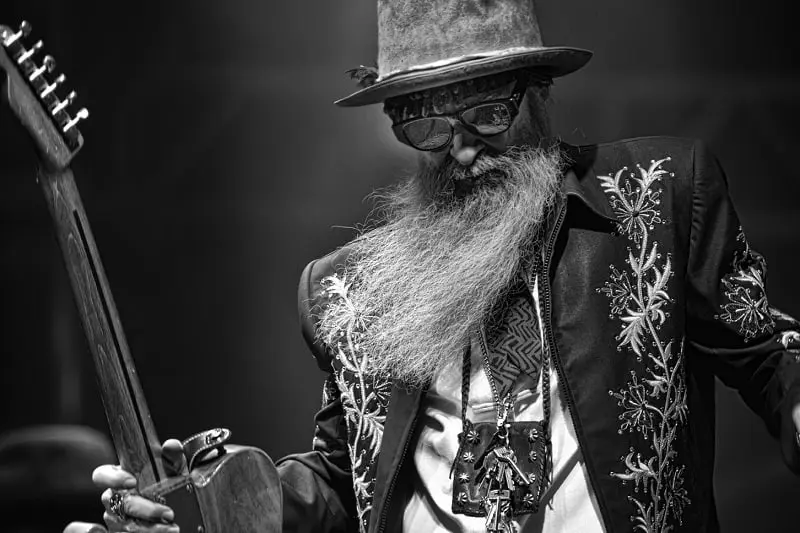 If there’s a face almost anyone can recognize on the street, regardless of what kind of music they listen to, it’s Billy Gibbons. At this point it’s hard to discern whether his beard or his music is more popular.
If there’s a face almost anyone can recognize on the street, regardless of what kind of music they listen to, it’s Billy Gibbons. At this point it’s hard to discern whether his beard or his music is more popular.
This man, along with Dusty Hill and his driving bass lines, is responsible for a good chunk of rock’n’roll history. When they established ZZ Top, back in 1969, these two guys and Frank Beard completely turned the music scene upside down.
Today ZZ Top is one of the most legendary bands in the history of music, with a sound that is recognizable in every corner of the world, just like their beards. Loved by young and old, this band managed to popularize that classic rock sound molded into heavy blues. What ensued was a true eargasm that we had the opportunity to enjoy for all these years.
The main component of ZZ Top’s sound is Billy Gibbons and his choice of gear. The point of this article is to go over what Gibbons uses on stage, and in the recording studio, that has made ZZ Top so unique and popular. We will take a look at his guitars, his amps, and his effects pedals. So without further ado, lets dig in.
Billy Gibbons Guitars
Billy Gibbons has been seen with a number of different guitars, both on stage and in ZZ Top videos. However, there’s only one guitar he considers his baby. It’s his 1959 Gibson Les Paul he calls ’Pearly Gates’.
He named it after the car he sold to buy that guitar. That Les Paul is a huge part of their original sound. Other guitars include a very rare Gretsch Jupiter Thunderbird, a guitar given to him by Bo Diddley. Anything else he uses only fills the gap between these two guitars.

Before he was in ZZ Top, he used some Fender models such as Fender Jazzmaster and Fender Esquire. However he always came back to his Gibson. One thing worth noting is that Gibbons insisted on using heavy gauge strings in his early career.
Just like most guitar players today, he believed that heavy gauge strings are the only way to get that heavy tone. However, B.B. King changed his mind completely after one conversation, and since then Gibbons uses light gauge strings on his guitars. The benefit of using lighter gauge strings is the increased comfort and overall playability.
Amps
There’s only one amp in Billy Gibbons’ book of sound, and that’s Marshall Super Lead model 1959 tube amp. It’s the predecessor to the now famous Marshall Plexis. This vintage Super Lead is the yang to Les Pauls Ying. Together, this combination is what allowed Billy Gibbons to create that ZZ Top unique sound.
Nowadays he is using two Marshall JCM900 2100, 100 Watt heads combined with three Marshall angled 4×12 1960AX cabs on top of three Marshall 1960BX 4×12 cabs. All of these feature Celestion 25-Watt Greenback speakers.

This modern variation of Marshall’s amps and cabs is probably the only setup that can truly carry on the sound Gibbons first dialed in on his Super Lead. Gibbons partially boosted the image of Marshall amps on his own. His sound was so respected that many guitar players around the world wanted to have the same rig as his.
Effects Pedals
Billy Gibbons’ pedalboard is somewhat strange compared to most guitar players. For example, he is know to use no less than six Bixonic Expandora distortion pedals. At this point you’re probably imagining the horror this cluster of pedals creates.
However, Gibbons brings each pedal to an edge where signals start to collide, and keeps them all just below that threshold. You will occasionally see SIB Varidrive, Austone Fuzz Nuts, Zvex Super Hard On, and similar less known overdrive/distortion pedals in his setup. Aside from a wah pedal, he uses very little modulation in his sound.
Conclusion
This was a short overview of Billy Gibbons gear content, and what he uses to achieve that legendary ZZ Top sound we all love. As you figured out by now, he does some crazy things with his effects pedals.
Those six Bixonic Expandora distortion pedals look even crazier when you add the rest of the stuff he has on his pedal board.
